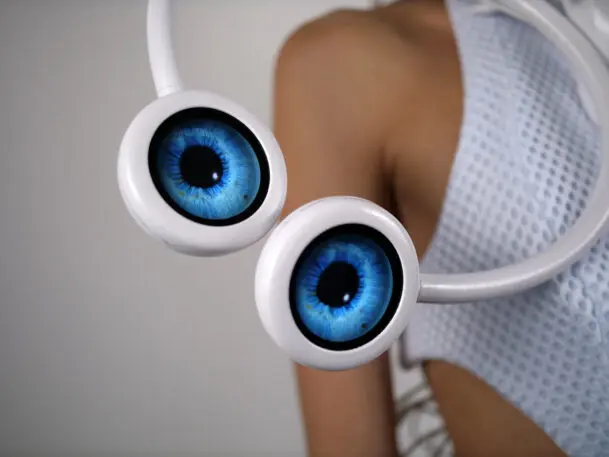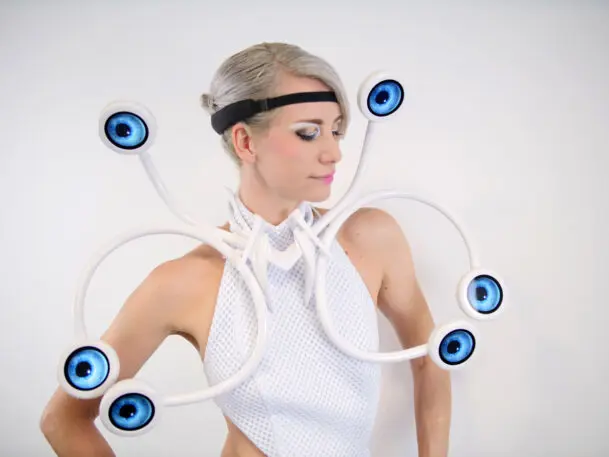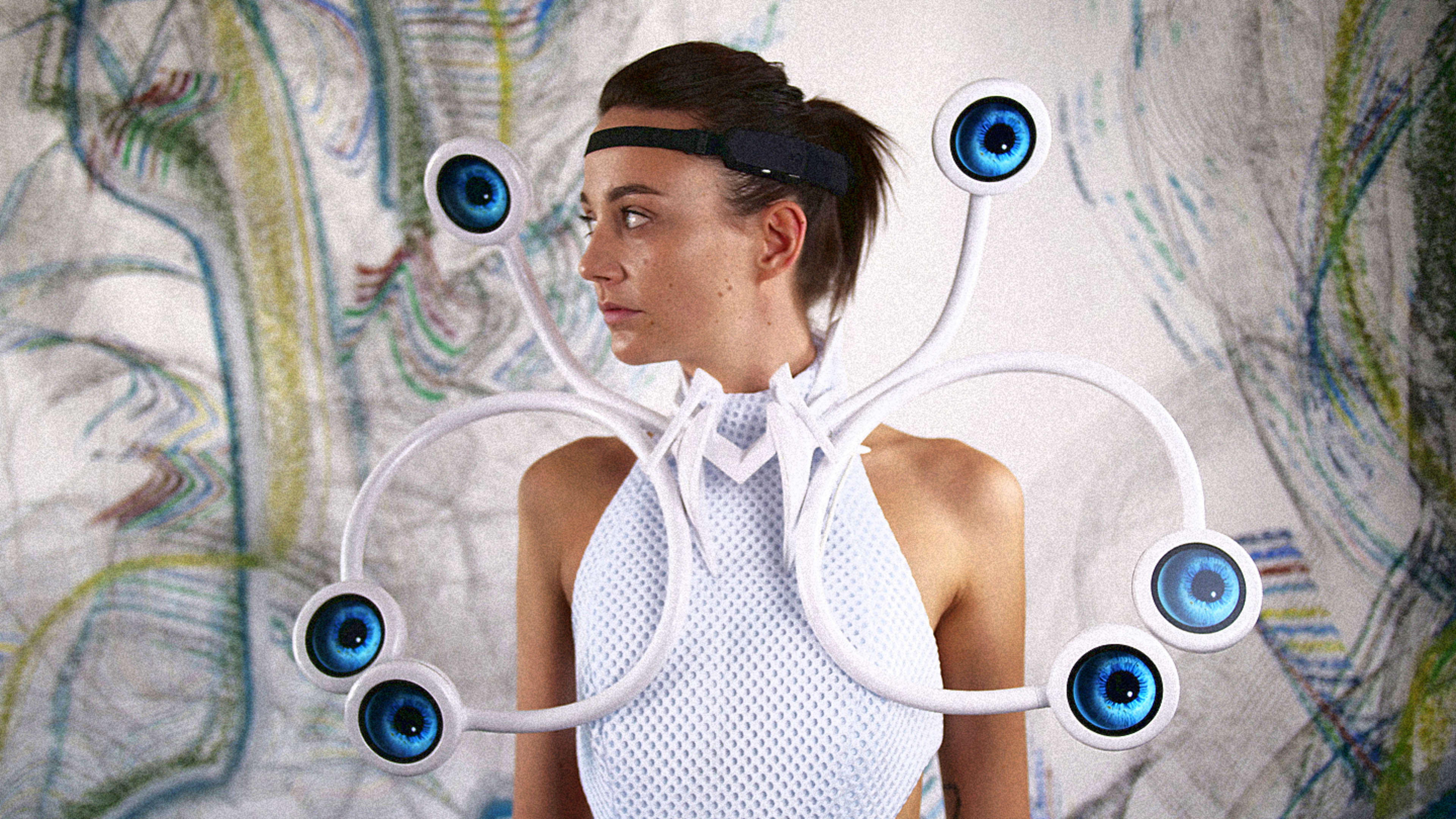Fashion is a form of expression; it allows us to articulate who we are or how we’re feeling. But what if it could help communicate how much we have on our minds?
Anouk Wipprecht, a Dutch designer who is somewhat obsessed with creating garment that reads minds, has crafted a futuristic, alien-looking white dress covered in what looks like eyeballs. Called ScreenDress, it’s designed to help the wearer express how their cognitive load changes throughout the day.
The term “cognitive load” refers to how much your brain is processing at any given moment. Throughout the day, we’re constantly being pelted with information and distractions that take you away from the task at hand. As you’re trying to get ready for work in the morning, your child asks you for breakfast, your phone dings, NPR is on in the background. It’s a lot to take in. When your brain is overloaded, it can lead to stress, fatigue and frustration.
The problem is, many of us are not fully aware of our cognitive loads. And this makes it hard to express to other people how much we’re dealing with—and how short our trigger might be. Wipprecht thought that fashion imbued with technology could offer a solution. “Fashion can help the wearer communicate with other people about what is going on inside their own bodies,” she says.

The ScreenDress features a neckpiece that has six round displays on it that look like little eyes, with an iris and a pupil. The neckpiece is connected to a headband that the user wears, which tracks brain waves. The headband, which is made by the technology firm G.Tec, uses data from the brain to estimate cognitive load. And in turn, Wipprecht visualizes this data on the displays. When the person wearing the dress is mentally overloaded or drained, the pupils on the eye dilate wider and wider. When the person has a reasonable cognitive load, the pupils constrict.
Wipprecht says she chose to visualize cognitive load with pupils because humans tend to manifest their cognitive loads in their eyes, even if we’re not fully aware we are doing so. “We are accustomed to looking at pupils and we can quickly assess how much it is dilated or constricted,” she says.
Besides being embedded with technology, Wipprecht used the latest technology to actually create it. She partnered with HP to 3D print the gown using a form of nylon that is lightweight but also strong enough to carry the electronic components.

For now, the dress is conceptual, and a form of performance art. But Wipprecht says that it is meant to inspire ideas about how fashion could help us navigate the stresses of everyday life. If your garments could somehow reflect your cognitive load to those around you, it might help ease tensions in your relationship. If your partner could see that you are handling a heavy mental workload, they might choose to defer a difficult conversation to a better time. If your colleagues at work could tell you’re overloaded, they might pick a different moment to share what they did on their vacation.
“The world is in the midst of a mental health crisis,” says Wipprecht. “We’re used to hiding our stress. But what if we could express the stress instead, and the rest of the world could adapt to our mental state?”
Recognize your brand’s excellence by applying to this year’s Brands That Matter Awards before the final deadline, June 7.
Sign up for Brands That Matter notifications here.
